birgit messmer
time, tempo, rythm.
eng
wird’s
am
mitt-
noch
per-
ma-
nent-
ly
80 min
320 min
8000 min
perma-
nent
be-
weg-
lich
there’s
still a
tomor-
row
long
term
da ist
nicht
viel zeit
zwischen
diesen
sachen
unsere
zeiten
das eine
fadet
aus, das
andere
beginnt
in
time
of
clima
crises
patchuli
erinnert
mich an
die 90er
what
could
we be-
come
in the
future

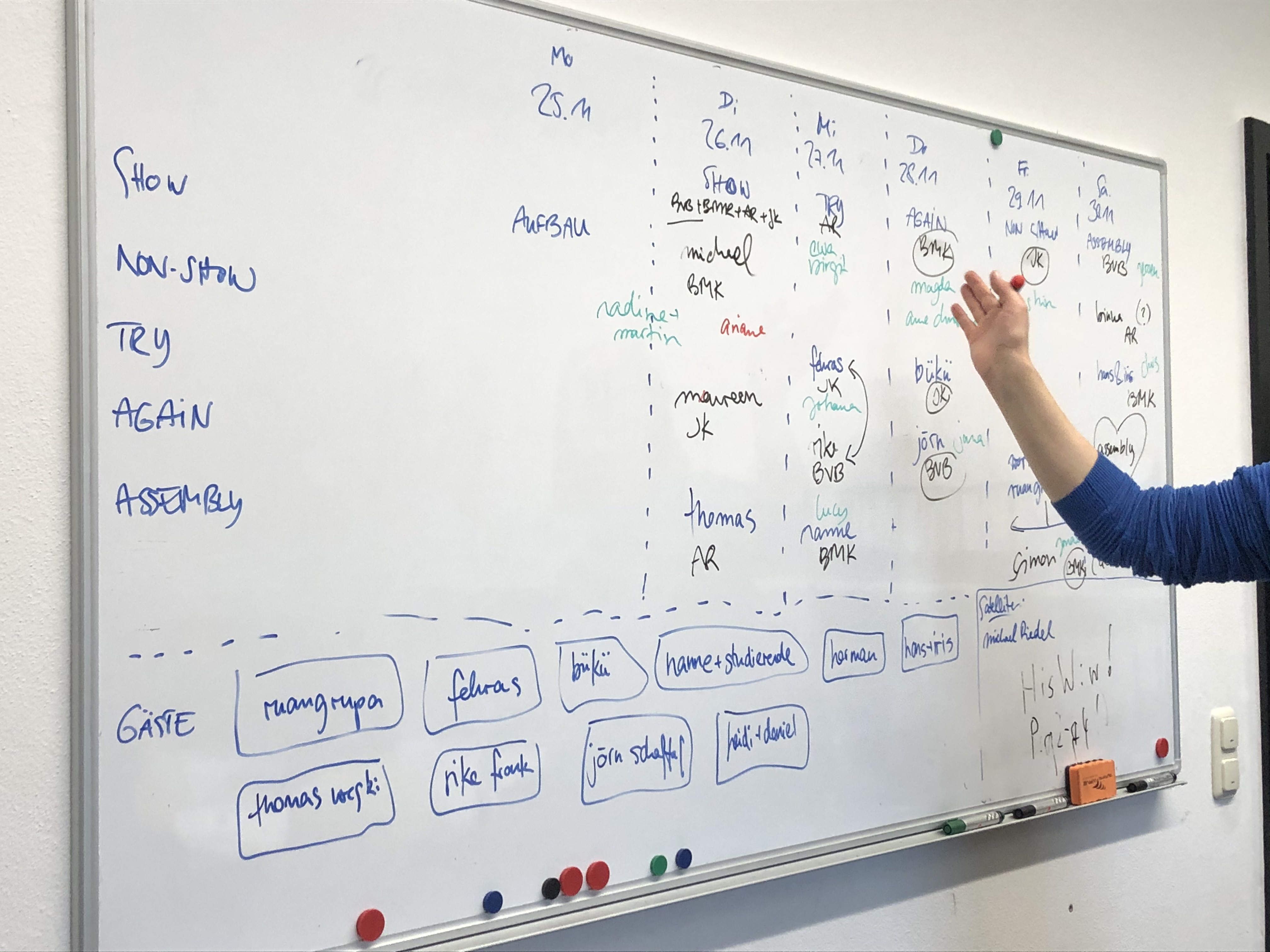
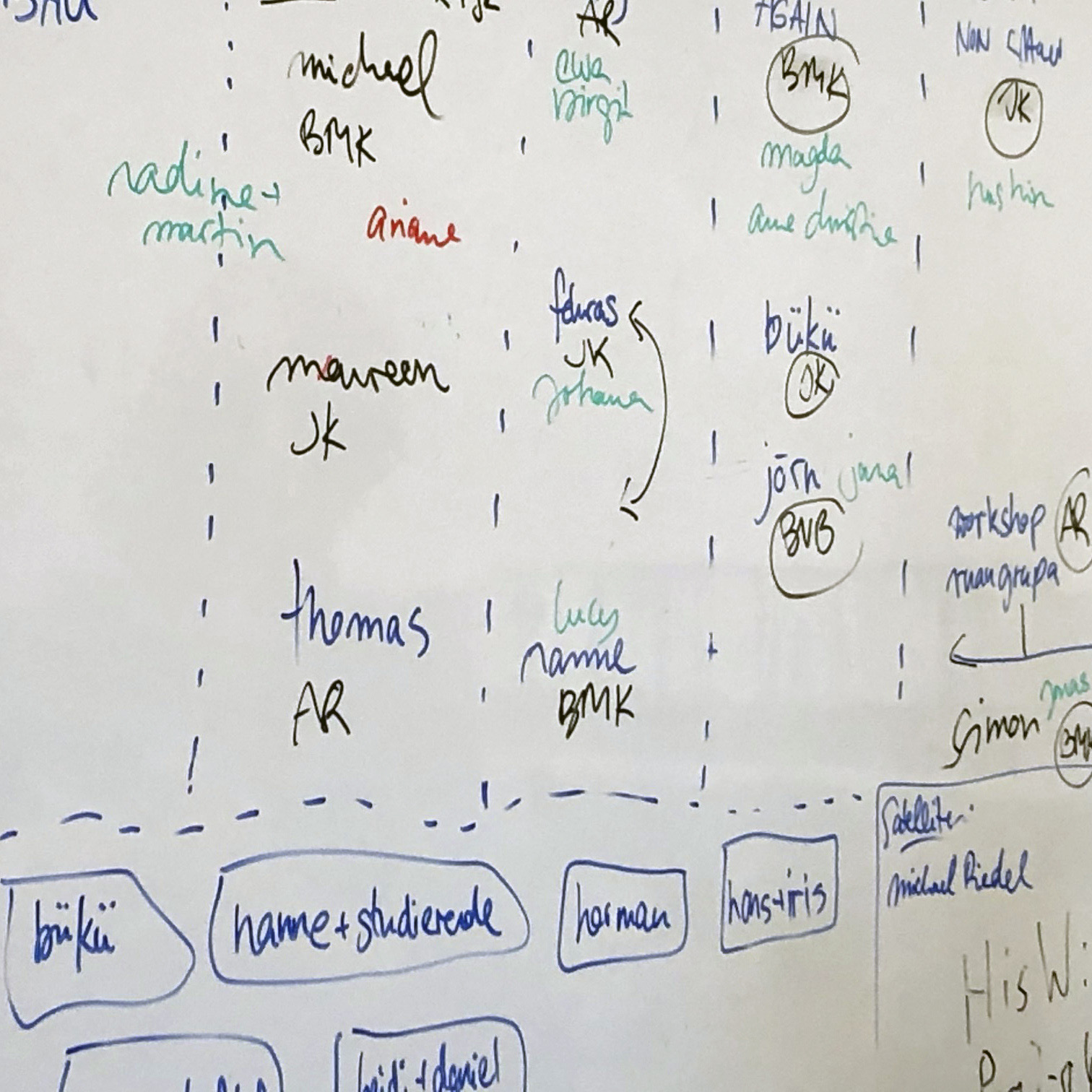



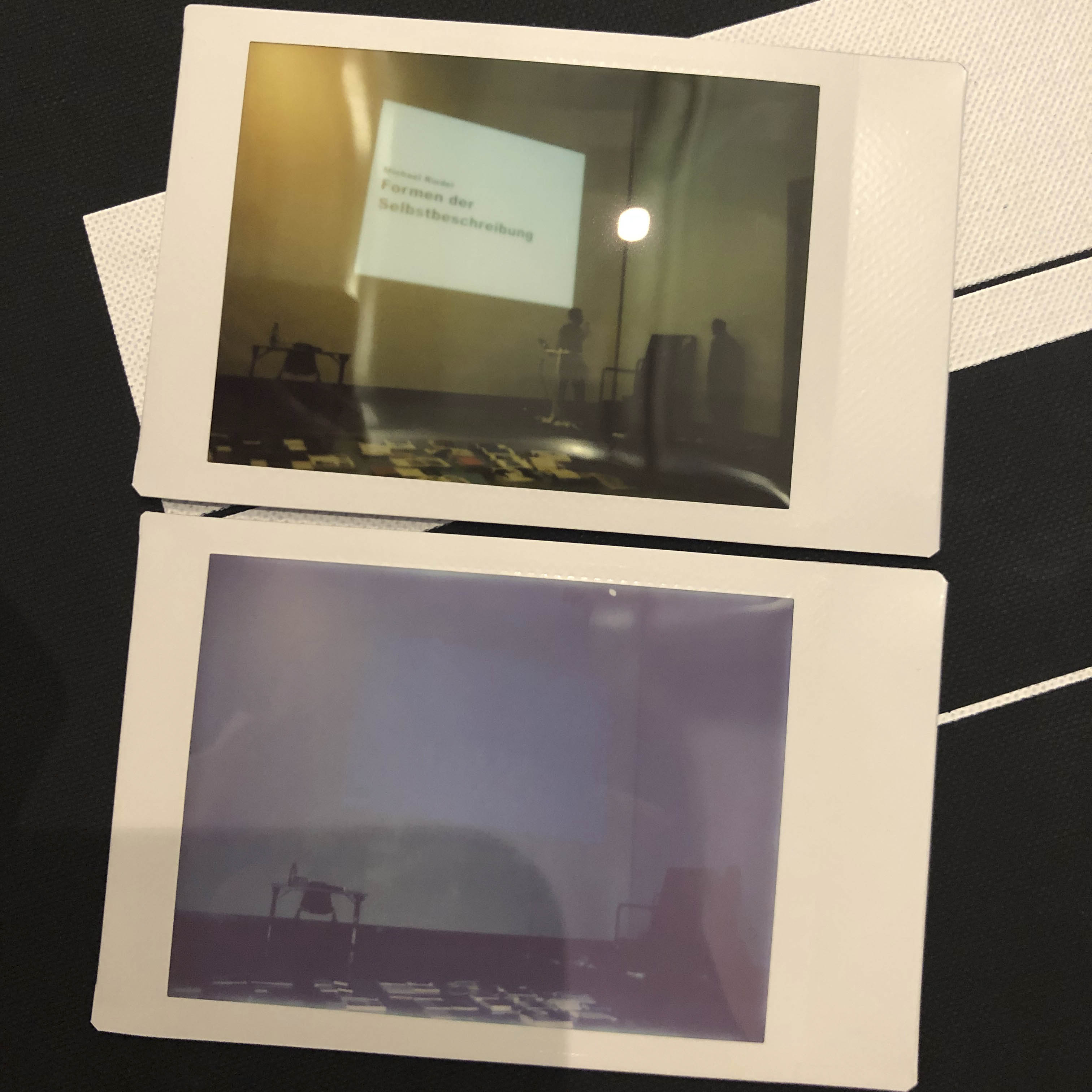
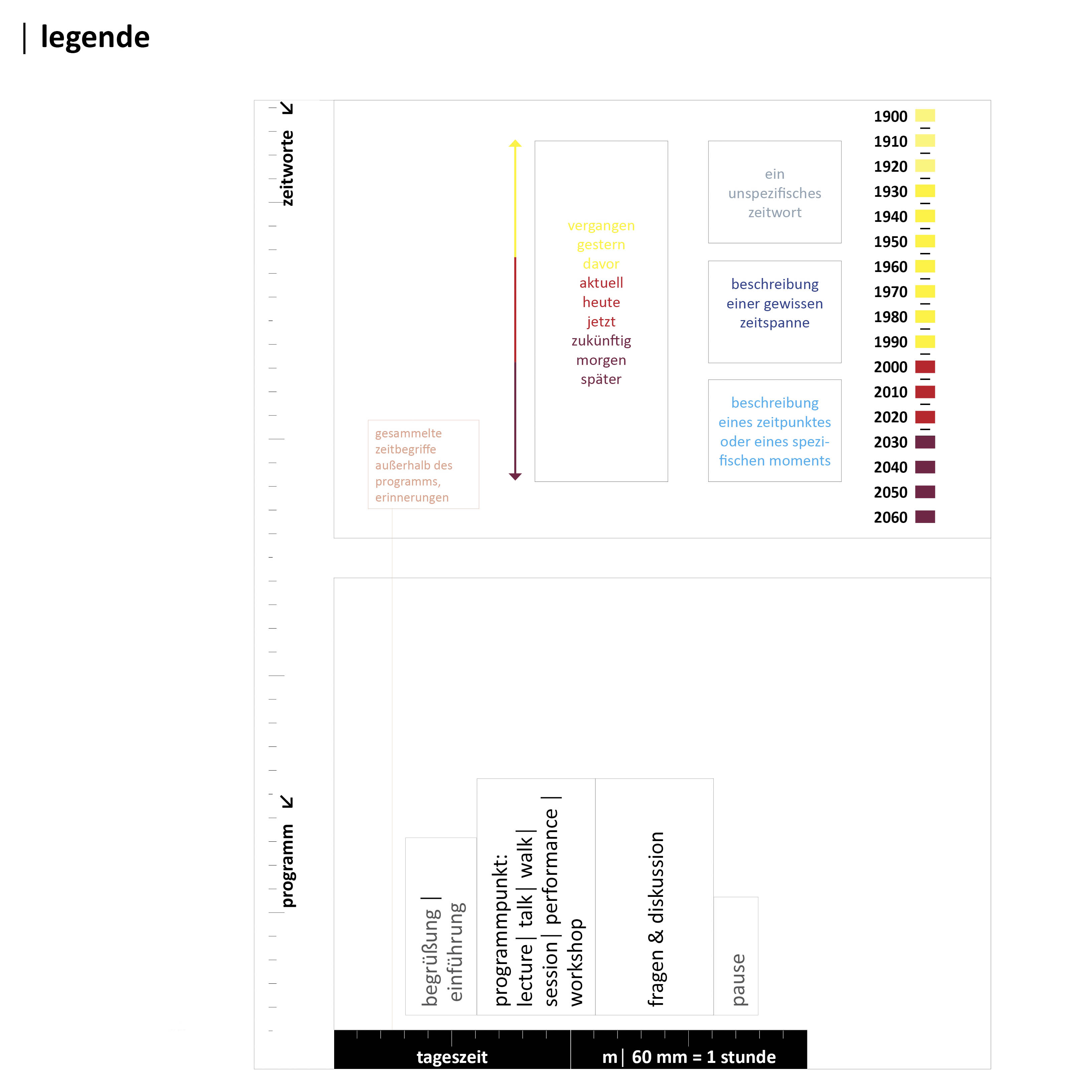
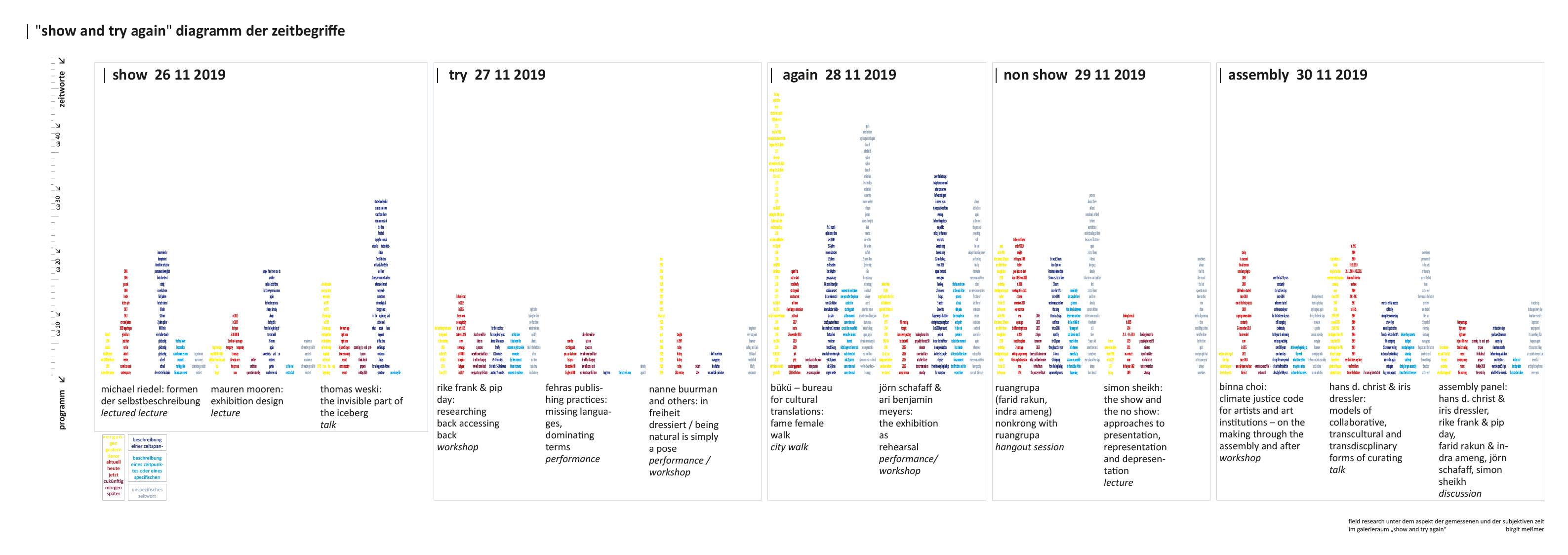
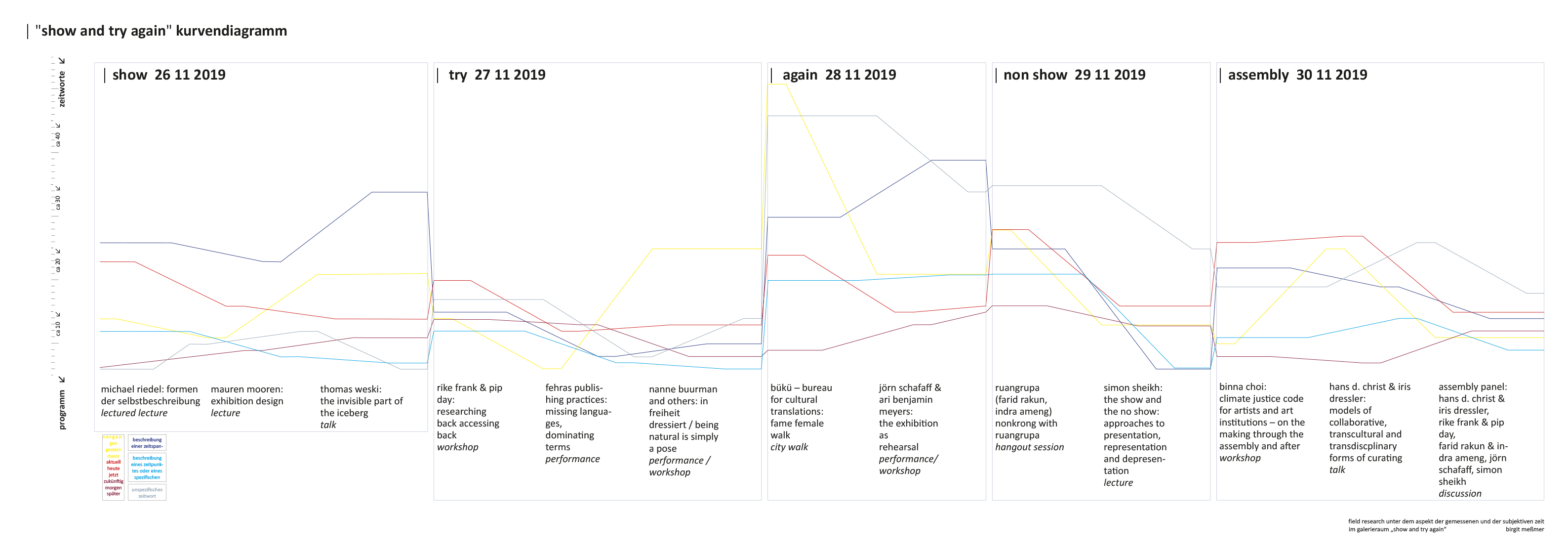


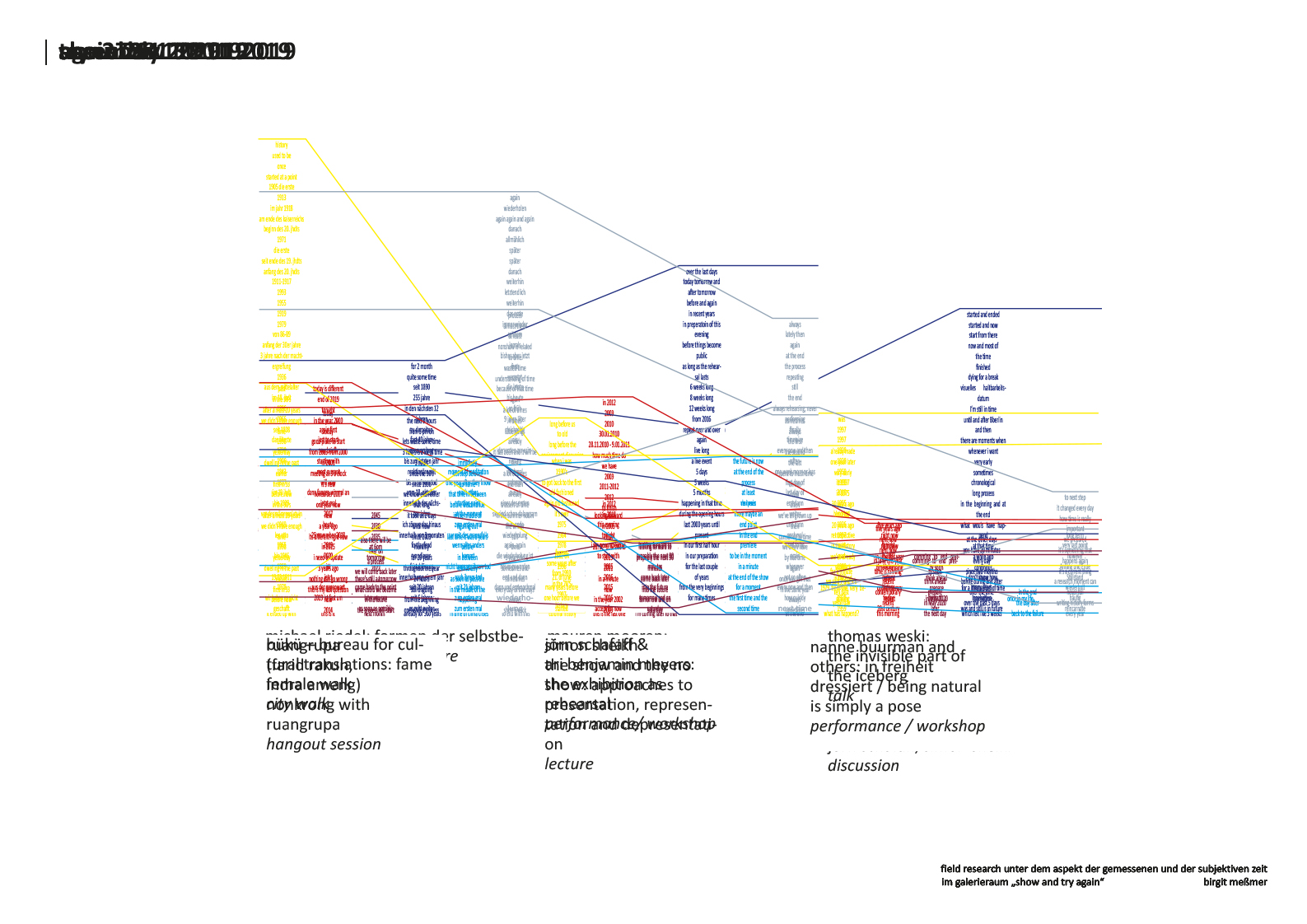
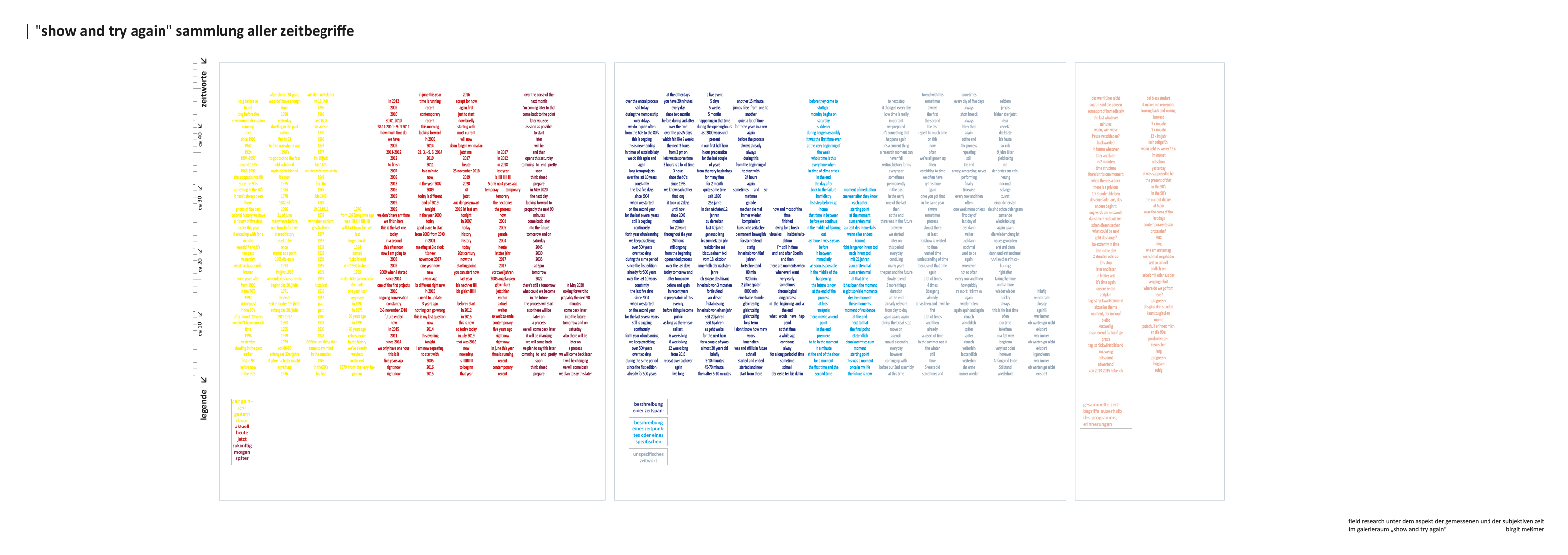
Time, Tempo, Rhythm.
The factor time influences us in what we perceive as real, the intensity we experience something or let it affect us, and how deeply we want to and can immerse ourselves in an art form, a performance, a symposium, an observation, a narrative. We also understand any presentation of procedures and processes by their locations in a temporal context. Is there a connection between the context of a presentation’s content and the respective time period that this part of the program captures? Which time periods leave an impression on the observer or participant? To what extent does the presence of time change the program? Does the temporal context overshadow certain content-related aspects or does it allow a new legibility of what is shown? Based on detailed time records and collections of terms, my field research creates an image of the time context within the gallery space. The consistent view of the purely temporal context in all program parts of the week Show and try again, makes it possible to show tempo and rhythm:
Stop and play, slowdown and speed, pause and movement are the parameters of my research. What is the relationship between the temporal references of a narrative and its contextual focus? Which time period can be experienced without words as soon as movement takes place? Does the observer stick to the time period they themselves have experienced, or to the experienced aspect of time?
Time, Tempo, Rhythm connects the time factor directly to the respective experience in the gallery space and reduces the experience by repeating temporal aspects in words and the week’s program.
A visual representation of the week’s program is created showing the rhythm and dynamics of the five program days. Using diagrams and graphs, the graphical translation of collected time terms are legible diagrams and show how the time factor in the gallery space changes in perspective. An illustration of the program’s start, duration and process represent the measured, absolute time.
Time Vocabulary
A collection of all terms mentioned in the context of a temporal statement.
During the introduction to a part of the program, I noted the terms mentionend by the respective hosts.
During the individual parts of the program, I noted the terms mentionend by the respective invited guests.
During the rounds of questions and answers, discussions and breaks, I noted the terms mentionend by the people present in the room.
The terms are color-coded to show their temporal context.
Diagram
Each diagram represents a program day of the program week show and try again. There are five diagrams, each with its respective focus:
│show 26 11 2019
│try 27 11 2019
│again 28 11 2019
│non show 29 11 2019
│assembly 30 11 2019
Recording begins at 9.30 am each day
Recording ends around 8.30pm.
The language conforms with the respective lecture and is not translated.













